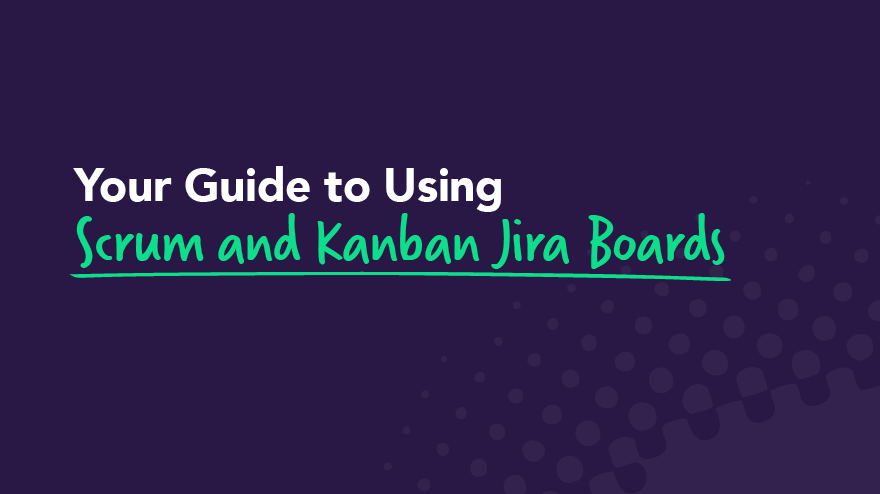Look Back, Leap Forward: Introducing Review by Easy Agile
When teams can create a safe space for challenges, improvements and wins to be shared, change happens.
Our Blog
The latest industry news, interviews, technologies, and resources.
When teams can create a safe space for challenges, improvements and wins to be shared, change happens.
Most teams spend hours in sprint planning, but still miss commitments. Discover why coordination matters more than estimation accuracy for predictable delivery.
Many teams run retrospectives, but not consistently. Learn how small, regular habits like connected retros help teams improve. Try Review by Easy Agile - free in Jira.
What sprint planning challenges will persist in 2026 and the best practices that improve team alignment, team collaboration, and steady team planning.
When teams can create a safe space for challenges, improvements and wins to be shared, change happens.
Awkward retros are common. Discover practical ways to make them safer and more effective. Try Review by Easy Agile, a free retro tool in Jira.
Real progress starts with alignment. Build team clarity, plan together, and let velocity take care of itself.
The Easy Agile Learning Hub is here to help you learn, align, and deliver with confidence. It respects your time and your context. It turns shared learning into shared results.
Discover practical facilitation tips for common retro challenges. Try Review by Easy Agile - free in Jira.
The five most popular sprint retrospective templates with agendas, prompts, and facilitation tips.
A practical guide to T‑shirt sizing in agile, when to use it, how to run it, how it relates to story points, and pitfalls to avoid.
Turn goal-setting chaos into delivery success. Fix team alignment issues, priority overload, and planning disconnects with these 5 proven methods.
Atlassian sets Data Centre EOL: 28 Mar 2029. Migrate early for savings & cloud-only AI, scale, security. Free Cloud Concierge till Jan 2027.
Why plans slip and the rhythm that fixes it, outcome, objectives, Business Value, dependencies, and a short weekly review.
A strategy roadmap closes the space between big ideas and daily work. It shows how to execute a strategy, turning vision into action, and highlights which key results matter and when to expect them.
Why PI objectives drift after planning and how to keep them visible, measurable, and aligned from planning to delivery.
How to tracking progress in Jira with evidence: link work to objectives, see real-time status, spot cross-team blockers with Easy Agile Programs.
Learn how Easy Agile restructured its OKRs for strategic focus, cross-team alignment, and real-time tracking - powered by Easy Agile Programs.
The hidden inefficiencies caused by common agile anti-patterns and how teams can break free for better collaboration and delivery.
Struggling with repetitive retros? This guide helps agile teams turn their reflections into results - with practical steps, examples, and a free template.
Learn how to create, embed, and evolve a team charter. Align purpose, roles, and behaviours to help your team thrive - onboard faster and work better.
Discover why communication, planning, and alignment often fail as teams grow, and how to fix it across product and development functions.
Most teams spend hours in sprint planning, but still miss commitments. Discover why coordination matters more than estimation accuracy for predictable delivery.
What sprint planning challenges will persist in 2026 and the best practices that improve team alignment, team collaboration, and steady team planning.
Awkward retros are common. Discover practical ways to make them safer and more effective. Try Review by Easy Agile, a free retro tool in Jira.
Discover practical facilitation tips for common retro challenges. Try Review by Easy Agile - free in Jira.
The five most popular sprint retrospective templates with agendas, prompts, and facilitation tips.
A practical guide to T‑shirt sizing in agile, when to use it, how to run it, how it relates to story points, and pitfalls to avoid.
Follow this how-to guide to building and implementing an agile workflow in Jira. In this article, we’ll cover what an agile workflow is and define the steps for its creation and its principles in depth.
While agile methodology aligns with Scrum, Kanban, and Lean, here, we’ll focus on what a Scrum workflow is and how this methodology can support organizational teamwork.
PI Planning is key to scaling agile, so we’ve developed this guide and free PI Planning template to help you run successful planning sessions, and build your confidence for your next scaled planning event.
We’ve put together this ultimate guide with all the info you need to get up to speed on the latest user story mapping definitions, techniques, and tools. Let’s start with some basics
How do you feel when someone mentions “planning”? Do you look forward to the opportunity or does the thought of making a plan send you running for the hills?
How organized are your Jira boards? On the scale of “well-thought-user-stories-beautifully-prioritized-by-customer-value” to “the-digital-equivalent-of-a-90’s-era-laminate-desk-cluttered-by-sticky-notes-and-old-coffee-cups”, where do yours sit?
Success for agile software teams revolves around collaboration, flexibility, and efficiency.
Story points can be a little confusing and are often misunderstood. Story points are an important part of user story mapping, and many agile teams use them when planning their work.
Sometimes the idea of writing user stories can seem like another "thing" on top of an already busy workload. But for software development teams who are looking to lead their own improvement and deliver software that works for their customers, writing effective user stories is the first step.
PI planning is a powerful event that helps teams align around goals, business objectives, and customer needs. Traditionally, this quarterly gathering brought together large teams of more than 100 people, including software developers and stakeholders, to complete essential planning.
Agile is about empowering teams to take ownership, feel truly engaged, and foster a culture of collaboration.
The most efficient and effective method of conveying information to and within a development team is face-to-face conversations.
“The people who plan the work do the work” is the unwritten rule of the Scaled Agile Framework.
In large, conventional organizations, multiple departments manage specific functions. Marketing, finance, HR and sales teams work in silos,
In this article, you’ll learn about the benefits SAFe can offer your enterprise and how effective organizers lead and implement SAFe. You’ll also hear about training courses that can help.

Many teams run retrospectives, but not consistently. Learn how small, regular habits like connected retros help teams improve. Try Review by Easy Agile - free in Jira.

When teams can create a safe space for challenges, improvements and wins to be shared, change happens.

The Easy Agile Learning Hub is here to help you learn, align, and deliver with confidence. It respects your time and your context. It turns shared learning into shared results.

A strategy roadmap closes the space between big ideas and daily work. It shows how to execute a strategy, turning vision into action, and highlights which key results matter and when to expect them.

Why PI objectives drift after planning and how to keep them visible, measurable, and aligned from planning to delivery.

How to tracking progress in Jira with evidence: link work to objectives, see real-time status, spot cross-team blockers with Easy Agile Programs.

At Easy Agile, we’re constantly looking for new ways to improve our products, and one of the ways we foster innovation is through Dash Days

Retrospectives help create an environment where team members can freely share their wins and challenges.

Atlassian products set a strong foundation of security and reliability and it only makes sense that the apps that clip onto these products are just as safe and secure.

There is a HUGE difference between managing a single project versus the kind of project management large organizations require for aligning multiple projects, teams, and departments.

Software security—it’s definitely not the sexiest of topics, but it’s an important one. When not prioritized, it can lead to devastating results

Roadmaps help agile teams produce great products. They’re iterative, visual, collaborative, and they can be created directly in Jira.

There are some things so obvious that you wonder why it hasn’t happened sooner or how you ever lived without it. This is how we feel about our just-launched integration between Easy Agile User Story Maps and Easy Agile Personas.

According to HubSpot, 96% of growing companies say that customer satisfaction is a key driver of their success.

By creating a Jira roadmap you won’t need to track down that one you created in Google Sheets or PowerPoint (or did I create it as a table in Confluence?)

In this lightning talk, recorded at Facebook, John explores story maps as a way to figure out what your agile software development team should focus on (in order to satisfy customer needs).

Real progress starts with alignment. Build team clarity, plan together, and let velocity take care of itself.

Turn goal-setting chaos into delivery success. Fix team alignment issues, priority overload, and planning disconnects with these 5 proven methods.
.png)
Why plans slip and the rhythm that fixes it, outcome, objectives, Business Value, dependencies, and a short weekly review.

Learn how Easy Agile restructured its OKRs for strategic focus, cross-team alignment, and real-time tracking - powered by Easy Agile Programs.

The hidden inefficiencies caused by common agile anti-patterns and how teams can break free for better collaboration and delivery.
.png)
Struggling with repetitive retros? This guide helps agile teams turn their reflections into results - with practical steps, examples, and a free template.

Learn how to create, embed, and evolve a team charter. Align purpose, roles, and behaviours to help your team thrive - onboard faster and work better.

Discover why communication, planning, and alignment often fail as teams grow, and how to fix it across product and development functions.

Explore how psychological safety, team inclusion, and diverse learning styles fuel high-performing teams. Learn how to support every team member, foster continuous improvement, and create inclusive workflows that empower everyone.

Tired of talking in circles? Learn why most sprint retrospective action items don’t lead to change and how to build a system for follow-through that actually works.

Let's talk about the backlog refinement process, once known as backlog grooming. You might know the Pareto principle and the philosophy of doing 80% of the work with 20% effort. It sounds wonderful, right?

Agile planning is a critical phase of the agile process, as it determines the team’s priorities and sets the tone for the work to come.

Find out what goes into creating a planning meeting and how to set your Scrum team up for successful product releases.

What's next for Agile in 2025? Industry experts and the Agile community reveal 8 key trends, from the evolution of agile roles to business-wide transformation. Get actionable insights.

Transform your agile practice with customer-centric development. Learn the six core principles of customer-focused agile and how to implement them for better outcomes.

Learn how user story mapping can transform your product development process. Explore how to visualize customer journeys, prioritize features effectively, and ensure your team builds products users actually want.

Estimation is a common challenge for agile software development teams. The anticipated size and complexity of a task is anything but objective; what is simple for one person may not be for another.

Aligning agile teams around user needs results in software that resonates with users and fulfills business goals. Successful software delivery relies on continuous alignment and empathy with customer needs, so that users are satisfied with the software you deliver, and see the value offered by your organization.

Let’s take a look at 7 reasons why it’s good to have a healthy level of customer obsession in your agile teams.

Part of the SAFe framework is the concept of an agile release train (ART). If you're not familiar with ARTs, you're in the right place.

“Do or do not; there is no try.” While this is certainly Jedi Master Yoda’s most famous quote, it doesn’t exactly apply to agile development.

Atlassian sets Data Centre EOL: 28 Mar 2029. Migrate early for savings & cloud-only AI, scale, security. Free Cloud Concierge till Jan 2027.

We are thrilled to announce that Easy Agile has successfully achieved SOC 2 Type II compliance, a significant milestone in our unwavering commitment to maintaining high standards of security and privacy.

Nick and I started Easy Agile after returning home to Australia from living and working in San Francisco where we witnessed the good and not-so-good sides of startups.

When working in Jira, lots of users struggle organising their data at scale and even resort to exporting it to a Google sheet, MS Excel spreadsheet or Smartsheet to make sense of it.

We’re checking the surf and haven’t talked in a while. Two sets of eyes locked on the ocean, is it worth paddling out this windy winter morning?

Easy Agile’s purpose is to find a better way to work. Back in 2018 we consciously acknowledged that what got us here👇🏼, won’t get us there 👉🏼.

It's a Monday morning and I’ve just pulled into the Kiama train station carpark.

Atlassian alumni make up a part of the Easy Agile team, with several former Atlassian staff working within the Easy Agile business.

Design Industries are obsessed with improving the productivity of their Enterprise & Government clients. They do this by optimising their clients' usage of Atlassian tools and implementing best practices while ensuring the platform and apps remain highly available through their partnerships with AWS and Ali Cloud.

Without intuitive software to guide projects, managers and team members can easily end up shaking their heads in utter confusion.

Our team has been using Jira workflows for years, and we’ve learned a thing or two along the way. Okay, we’ve learned a lot along the way. 😎

Curious about what it takes to become a Jira administrator? Want to become one yourself? Or maybe you already are a Jira admin, but you’re constantly striving to learn more about your field. Either way, you’ve come to the right place!

Any organizational change is complex, no matter how big or small. Tracking workflows can also be a huge headache without software.

In this post, we’ll focus on all of the features available for teams using Jira Software. We’ll cover what’s included and how your team can make the most of Jira Software features and add ons.

A sprint focuses on interaction and collaboration to produce working software. A team has to do a lot of work to maintain their sprint workflows in Jira.

These apps help teams successfully carry on projects and deliver on time. In this article, we’ll go over our selection of Jira gadgets for workflow management, reporting, and project administration.

A key principle of working in an agile way is flexibility. It throws away rigid plans and instead embraces an iterative process that evolves with the needs of the customer.

It's common knowledge in the world of digital marketing and eCommerce that personalization results in higher conversion rates, more engaged users, and a better overall brand experience for your customers.

Scrum isn't the only agile software development methodology out there. 😲 If you're not familiar with Kanban, we promise we’re not going rogue — Kanban is agile.

Read our list of recommended Jira tutorials, training, and certifications that will start you on the path to Jira mastery.

In this article, we'll unpack the purpose of product roadmaps and whether they’re all the same, as well as why Easy Agile Roadmaps for Jira is the simplest roadmapping tool for Jira.

Anyone working in the agile environment would agree there are a million different terms to wrap your head around. As a marketer with no agile or software development experience, this is definitely true for me.

Essential Visual Studio Code keyboard shortcuts in a TypeScript setting to save time and code faster.

How we achieved observability on Forge, covering metrics, logs, tracing, and lessons learned along the way.

We all know writing unit tests is important but sometimes it feels like it can take up more time than the feature work itself.

I bent over my desk in frustration, suppressing the urge to scream so as not to upset the rhythmic clack-clack of my coworkers.

I fell into web development, that's how it feels without digging into the details. That does not sound like how you want to go about choosing a career but in reality, it was years of small decisions and nudges that I ended up doing work I really enjoy.